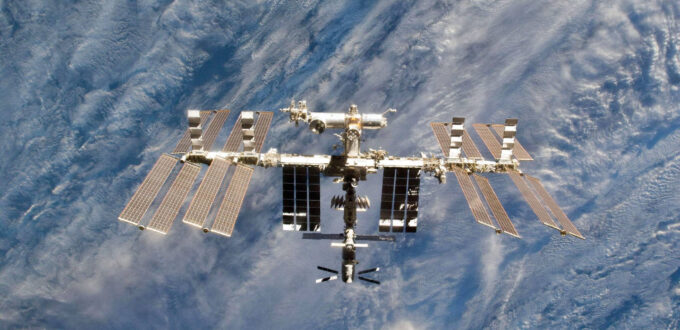A bullet Russia fired into one of its own satellites in a munitions test on Monday generated an orbital debris field that risked the International Space Station and will pose an ongoing hazard to space conditioning “ for times to come,” US officers said.
The seven- member space station crew — four US astronauts, a German astronaut and two Russian cosmonauts — were directed to take sanctum in their docked spaceship capsules for two hours after the test as a palladium to allow for a quick flight had it been necessary, NASA said.
The exploration lab, ringing about 402 km over Earth, continued to pass through or near the debris cluster every 90 twinkles, but NASA specialists determined it was safe for the crew to return to the station’s innards after the third pass, the agency said. The crew was also ordered to seal off doors to several modules of the space station for the time being, according to NASA.
NASA will continue covering the debris in the coming days and beyond to insure the safety of our crew in route,” NASA principal Bill Nelson said in the statement.
Experts say the testing of munitions that shatter satellites in route pose a space hazard by creating shadows of fractions that can collide with other objects, setting off a chain response of shells through Earth route.
Thousands of fractions
The Russian service and ministry of defense weren’t incontinently available for comment. The direct- ascentanti-satellite bullet fired by Russia generated further than pieces of “ trackable orbital debris” and would probably generate hundreds of thousands of lower fractions, the US Space Command said in a statement.
“ Russia has demonstrated a deliberate casualness for the security, safety, stability and long- term sustainability of the space sphere for all nations,” space command principal US Army General James Dickinson said.
The debris from the bullet test “ will continue to pose a trouble to conditioning in external space for times to come, putting satellites and space operations at threat, as well as forcing further collision avoidance pushes,” he said.
US Secretary of State Antony Blinken condemned the bullet test as “ reckless and reckless.”
At the Pentagon, spokesperson John Kirby said the test showed the need to forcefully establish morals of geste in space. “ It’s unbelievable that Russia would jeopardize not only the American and transnational mate astronauts on the ISS, but also their own cosmonauts,” Nelson said. He said the pall of debris also posed a trouble to a separate Chinese space station under construction and the three- member crew of “ taikonauts” aboard that village.
The incident came just four days after the rearmost group of four space station astronauts — Americans Raja Chair, Tom Marshburn and Kayla Barron of NASA and European Space Agency crewmate Matthias Maurer of Germany — arrived at the ringing platform to begin a six-month wisdom charge. They were ate by three space station crew members formerly on board — Russian cosmonauts Anton Shkaplerov and Pyotr Dubrov and US astronaut Mark Vande Hei.
The space station, gauging the size of an American football field end to end, has been continuously enthralled since November 2000, operated by an transnational cooperation of five space agencies from 15 countries, including Russia’s Roscosmos.
Russia isn’t the first country to conductanti-satellite tests in space. The United States performed the first in 1959, when satellites were rare and new. In April, Russia carried out another test of ananti-satellite bullet as officers have said that space will decreasingly come an important sphere for warfare.


No Comments Yet